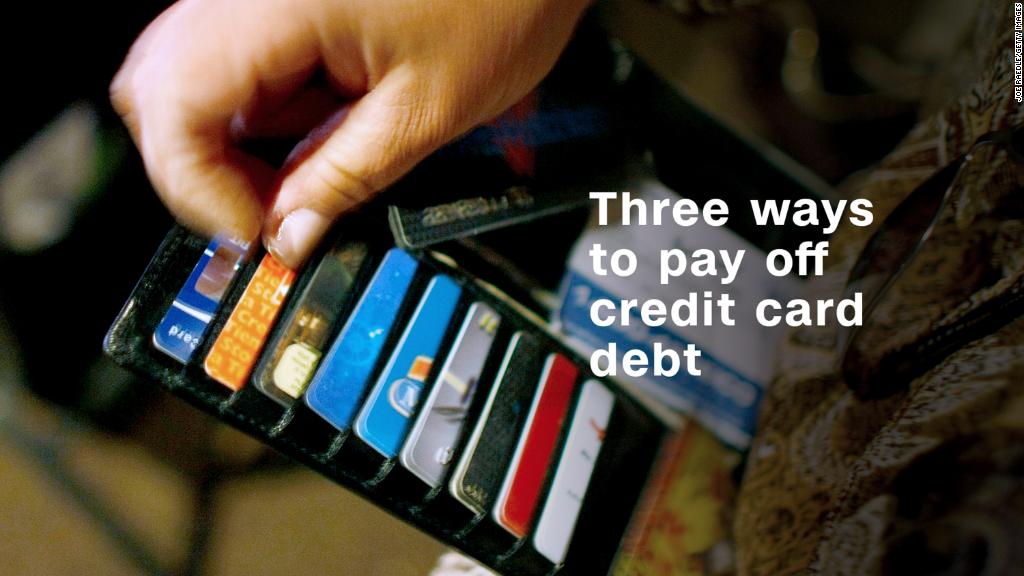
I have been in the workforce for a few years now (graduated in 2014) and have a decent mutual fund in place ($9,000), savings account ($9,000) and a Roth IRA ($10,000) because my current company does not offer a 401(k). But I do have credit card debt ($9,000) and student loans to pay off. Should I use my savings to pay off my credit card debt?-—Erin
"This question comes up all the time," says Angela Coleman, a certified financial planner and fiduciary investment adviser at Unified Trust Company.
But that doesn't mean there's one right answer.
Folks who have zero tolerance for debt, like radio host and author Dave Ramsey, will tell you to take everything but $1,000 bucks and throw it at that debt. Others will tell you to keep your emergency savings stash and set a budget to pay off the debt.
While no money mind can tell you precisely how much of your savings you should put toward debt, they can help you think about how to get to the right answer for you.
"After people have looked at all the factors — retirement goals, savings levels, amount of debt — it comes down to what you can live with," says Coleman. "Once you've analyzed everything to death, it is your decision and you have to be comfortable with your choice. That matters."
Know what else matters? An emergency fund. You'll start your decision-making process there.
Here is Coleman's path to come to a clear understanding of your options on whether you should use your savings to pay off debt.
How's your emergency fund?
"Emergency savings is always a must," says Coleman. "We usually recommend that you have about three months' worth of expenses set aside in savings."
So tally up all your essential monthly spending — rent, utilities, food, etc. and multiply that by three. You need at least that amount in savings at all times.
Without knowing how much Erin earns, we don't know if her savings is equal to three months or one month, but we'll assume it's at least a couple months of expenses.
"It is great that she has so much saved. Nevertheless, she probably doesn't want to use all of that at once," Coleman says. "Maybe it makes more sense to pay down half the credit card and focus her effort on paying off the rest rather than building her savings."
What is the interest rate on the debt?
We don't know too much about the student debt (how much? at what interest rate?), but some federal student loans are often considered "good debt" at a relatively low interest rate. But credit card debt is another story. Average interest on credit cards is around 15%. Meanwhile, savings accounts typically pay around 0.01%.
"If she's paying 15%-20% in interest while the money in the savings is doing nothing, that's not good," says Coleman.
Given how much high-interest debt will cost you compared with how little you're likely earning on cash savings, you may as well use some of it to pay off the debt.
What about getting rid of that interest?
Debt is one thing, but the mounting interest payments on that debt can cause paralysis.
"Another strategy is a 0% interest card," says Coleman. "You can transfer a balance to a card where you don't pay interest and save yourself some of the cost."
These are called balance transfer cards. The promotional 0% interest rate can be a huge relief, but it is only for a certain amount of time, usually nine to 21 months. The real question here is: Can you pay off $9,000 in debt during that time?
"That's usually a better strategy over a shorter period," says Coleman. "It is a loan to extend the debt, so it isn't as necessary to pay the lump sum out of your savings today."
Still, she adds, you'll need to use caution when paying off one credit card with another.
"Make sure you're aggressively paying it down during the set time, because at the end, if you still have a balance, you could have an even larger interest rate."
Is this debt keeping you up at night?
If it is, you might as well follow the Dave Ramsey method and slay that debt in one fell swoop.
If it isn't giving you fits — and there's a good chance it's not because $9,000 in credit card debt doesn't happen overnight — a sound plan is to leave your savings alone and just not add anything more to it till the debt is clear.
"I would suggest backing off of the savings," says Coleman. "If she can funnel all the money she's setting aside for savings and push it toward debt payments that would be a good plan."
But keep up the good work on the retirement front, Coleman adds.
"I wouldn't suggest that she pull back on the retirement savings at all," she says. "That is significant since she doesn't have a 401(k) at work. That's good that she's been able to put money away. It will benefit her significantly in the future."
What's the best plan for you?
There are several options.
You could use everything but $1,000 to slay the debt. You could put a hefty chunk of your savings toward the debt. You could transfer the debt to a card with a short-term 0% interest rate. You could just redirect all money that was going toward savings, to debt repayment. Or some combination of these options.
But remember, says Coleman: "Starting is so much more important than what you start with."
Whether you are throwing lump sums at the credit cards or just making larger debt payments than before, getting started on eliminating that debt is the most important thing.
Have a money question for Money Moves? Ask us here to be included in a future column.
